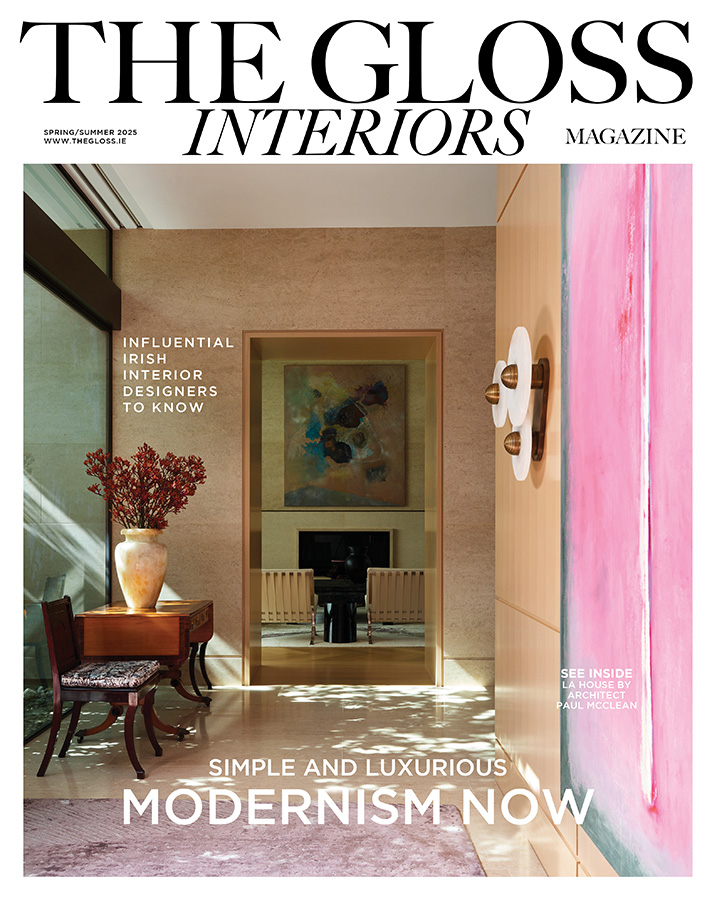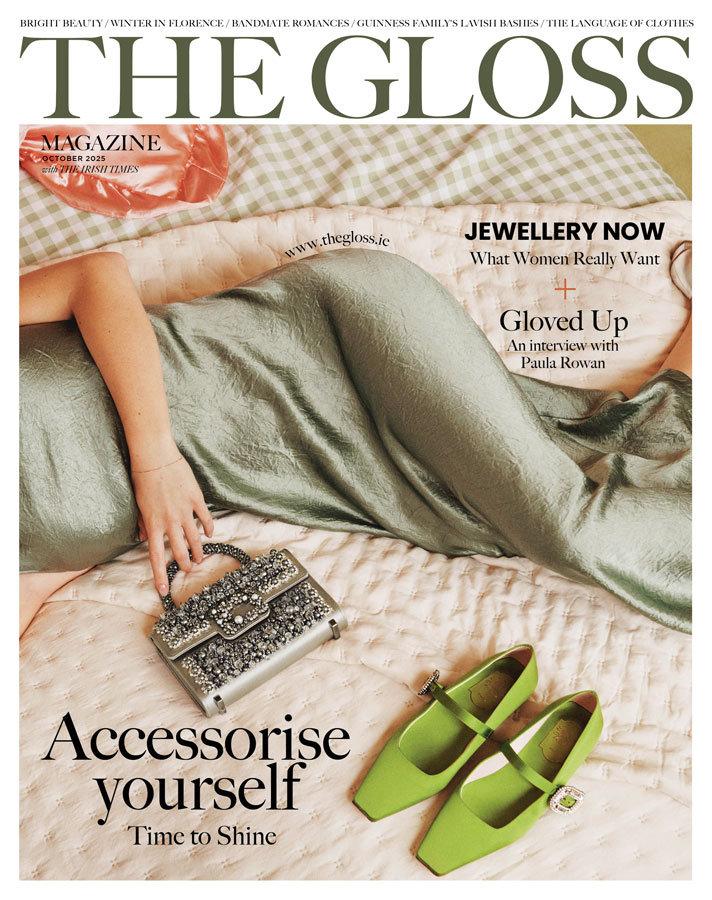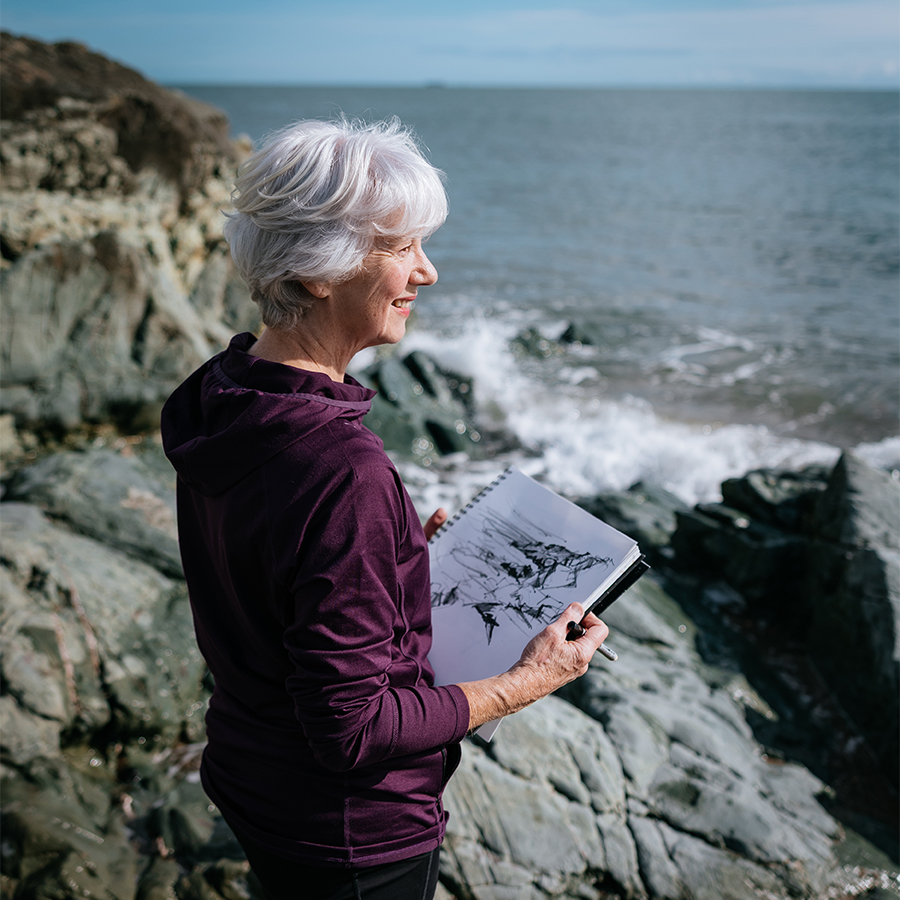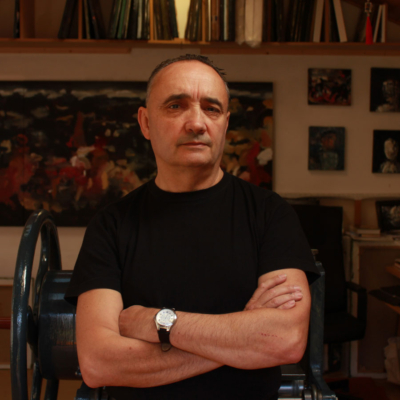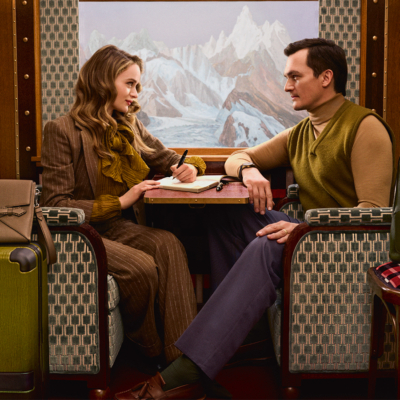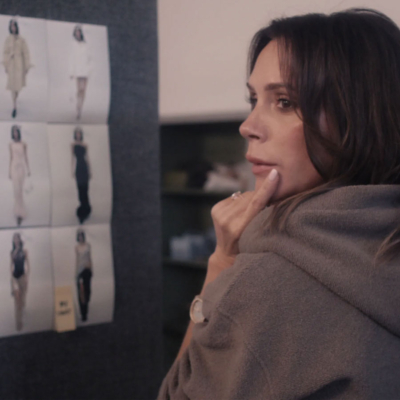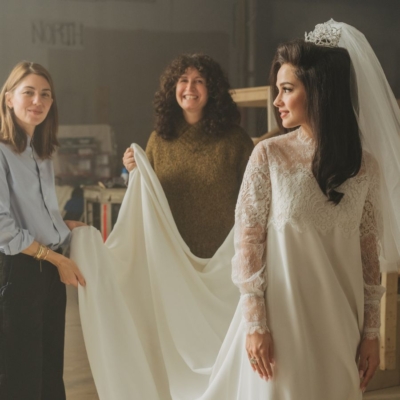The Wicklow-based Irish artist is known for her dramatic, realistic seascapes …
Who or what kickstarted your interest in art? I first discovered art as a way of connecting to an experience and holding onto memory in 1966 at the age of twelve. On our first trip to Donegal, I stood on the cliffs at Sliabh Liag looking out to the sunset over the Atlantic while massive waves pounded and crashed far below. I felt like my heart was blown open in that moment. The vast horizon, the power of the ocean, the wild, raw beauty all around me. We didn’t own a camera, so I sketched the scene in a little notebook to hold onto the feeling and memory of being there. I keep that sketch in my studio to remind myself that I want my art to always be a true expression of something deeply felt.

That experience set me off on a lifelong quest for the wildness and beauty of the natural world, and art became my way of absorbing and recording impressions. From Irish College on Inisheer in 1969 where I’d get up at sunrise to walk the beach, and draw the currachs and distant cliffs of Clare to my travel sketchbooks from Europe as a student of History of Art. Travels in my twenties led me to the wildest and most remote regions of the world, backpacking in the Himalayas, Patagonia and New Zealand. After college, I became an art teacher and this developed over the years into my full-time professional practise as an artist.
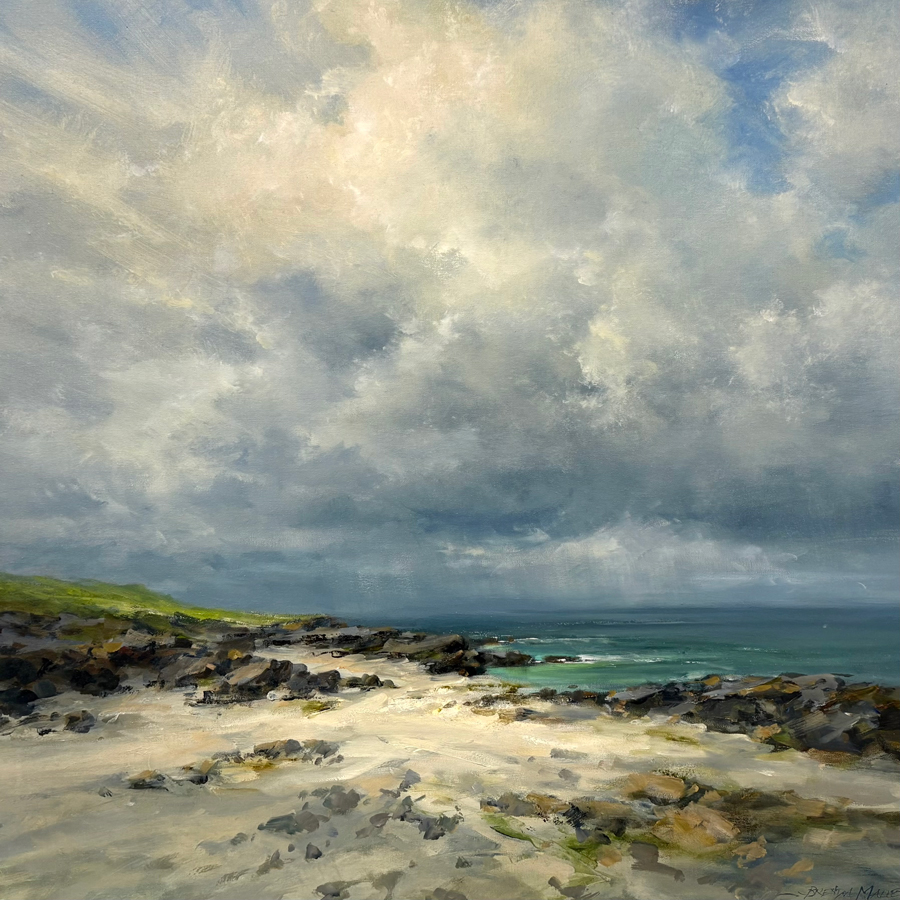
How your work has evolved? I did my first seascape painting 20 years ago, on a painting retreat on the North Mayo coast. Up until then, I had explored many subjects including portraits, flowers, architectural renderings. The sea had simply felt too huge as a subject, too wild, unpredictable, impossible to contain in the space of a painting, but on my first morning there I woke early and drove out to the cliffs at Downpatrick Head as the sun rose, bathing the ocean and headland in light. It was a heart-stopping moment, like I had felt on Sliabh Liag years earlier. I drew a sketch and wrote a few words: ‘A shaft of light on the water, the sea steel grey, Prussian blue, cold, dark, deep, untamed, the sun casting a luminous path on an infinite ocean’. I returned to my cottage and started to paint. That day marked a turning point in my art. I found a strength of expression that had always eluded me, this magical convergence when the subject itself, the means of expressing it, and the spirit of the artist all come together.
… the wild wet and windswept coast of Ireland, with stormy skies, rugged shores and rock and mud underfoot. This is where I am in my element.”
This subject continues to develop and evolve. It led to my initial gallery representation with the Leinster Gallery (now the Trinity Gallery) and my first solo exhibition there, “Seasons of the Sea” in 2008. A Culture Ireland Award followed in 2010 with a solo exhibition in the Irish Cultural Centre in Boston.
I spent four years living on the Côte d’Azur in the south of France, an artist’s paradise. But blue skies, sunshine, yachts and a built-up coastline lacked what I longed for in my art.
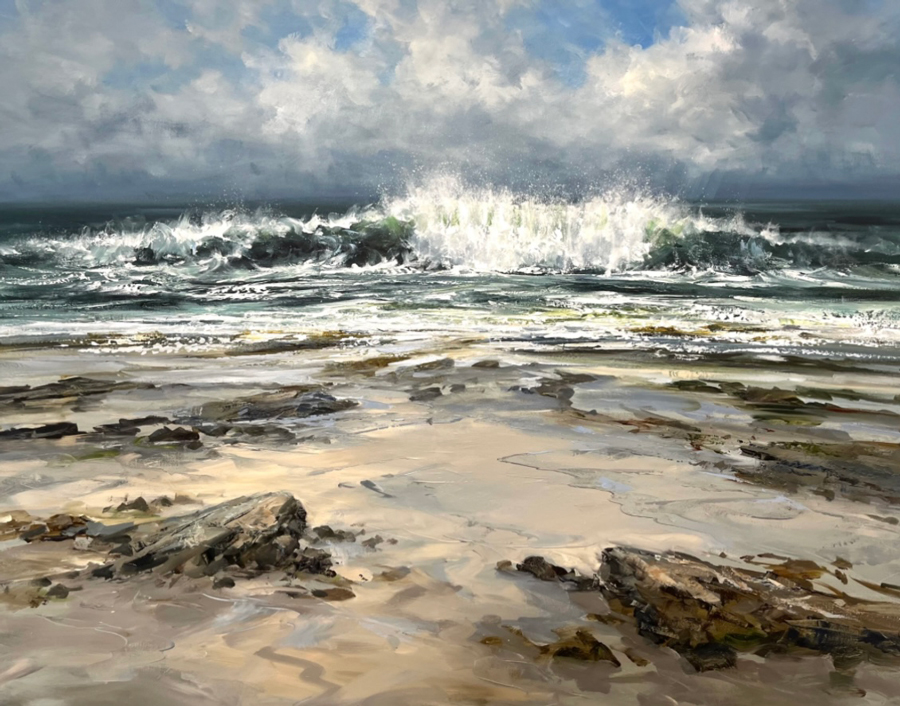
Tell us about your upcoming exhibition at the Trinity Gallery Dublin: “Call of the Running Tide” is a gathering of new work drawn from time spent on the Atlantic coast, as well as a series of sunrise paintings. The exhibition title comes from the poem “Sea Fever” by John Masefield, a poem I learned at school which has stayed with me all this time, and evokes deep feelings of longing for “the lonely sea and the sky”. I think I’ve been following this wild, clear call all my life.
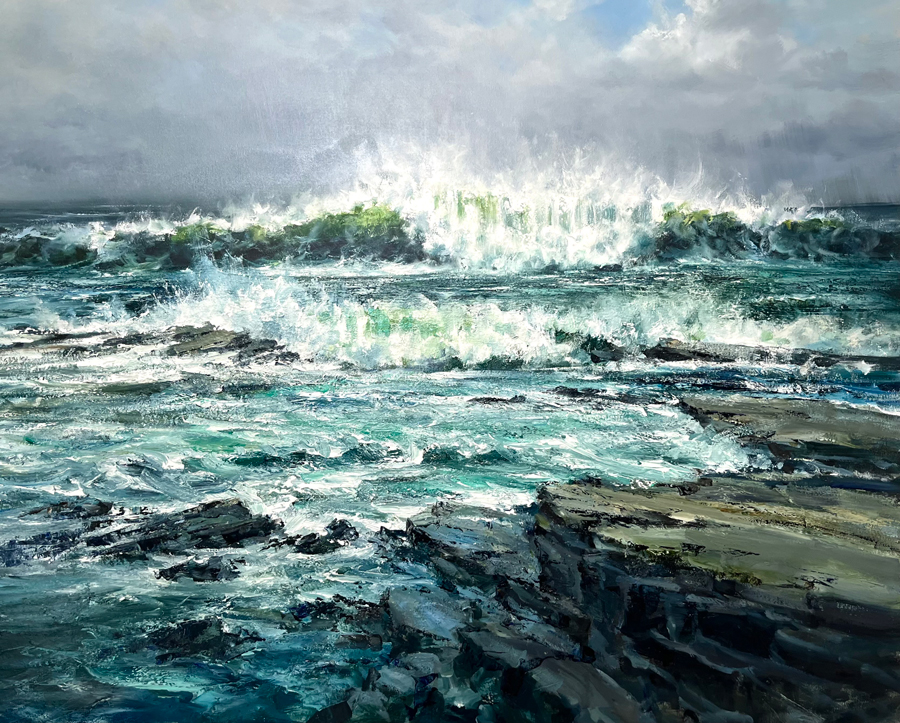
What advice do you give people starting out on an artistic career? Growth as an artist starts by developing your skills and regular practise. Attend workshops, watch tutorial videos, learn your craft. The most important part is to discern your own voice as an artist. What kind of art makes you feel happy, what subject is holding your attention at this time, what is it that you want to express about it?
“Your painting is a direct manifestation of the energy of the artist, and you want that to be clear, sure and strong.”
Sales will boost your confidence and give you a sense of the value of your work. Offer commissions in your subject field. Put your work out there. When you have built a serious body of work showing consistency and personal vision, start to research galleries to find one that would best represent the kind of art you offer. My own classes and workshops are held at the Schoolhouse for Art in Enniskerry where a great selection of art tuition is offered in all media.
Need to know: Brenda Malley’s exhibition “Call of the Running Tide” is on at Trinity Gallery in Dublin 2 from October 7 to 18. @brendamalleyartist
SEE MORE: Artistic License – Conor Horgan



